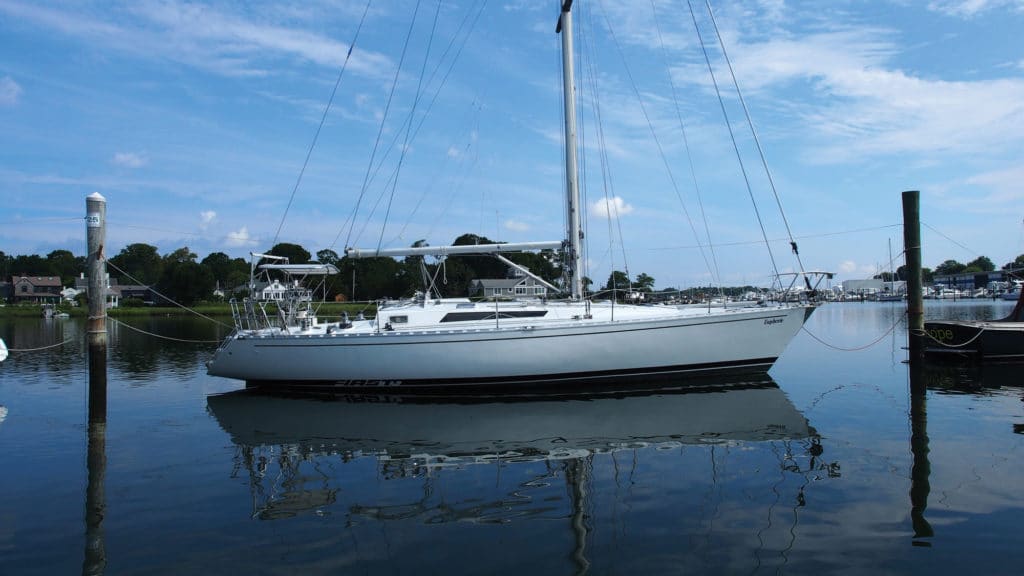
If you’ve been attending boat shows for the past 10 or 20 years like I have, you have surely noticed significant design evolutions from the major sailboat builders. Wide beam carried all the way aft to a plumb transom—which often articulates into a sweet boarding deck, sometimes even opening up a garage for a tender and motor—are becoming the norm. Dual helms and twin rudders are commonplace, and you’d be hard-pressed to find a boat without installed air conditioning and sophisticated refrigeration systems. Boats 30 feet and longer often have a bow thruster as an option, and shore power is standard equipment.
Recently I had the opportunity to turn on the not-so-way-back machine and take a trip to the 1980s to remind me what life on board back then was about. Let me share with you some of my observations and what I would consider changing if I were to buy such a boat.
The sample boat here is a Germán Frers-designed 1983 Beneteau First 42, offered for sale by Dave McKenny at Brewer Yacht Sales in Rhode Island. It is a one-owner boat that was repowered about 10 years ago, and its hull and deck have been repainted. The interior woodwork is the classic dark bright finish of the era and is in excellent condition. More common to that time, the boat has two proper sea berths port and starboard, amidships above and behind the standard saloon settees. And the upholstery has been updated.
The onboard electrical and electronic systems, however, are mostly original, with the exception of a fairly recent autopilot, a 1,000-watt DC-to-AC electrical inverter and an Isotherm seawater-cooled DC refrigeration/freezer upgrade for the original icebox in the galley. The boat has no shore-power system installed, which amazingly was not that uncommon back then. There is no bow thruster or electric windlass; winches are all sized properly but fully manual. So the question is, what would I do to bring this boat’s almost-40-year-old electrical/electronic systems into the new century?
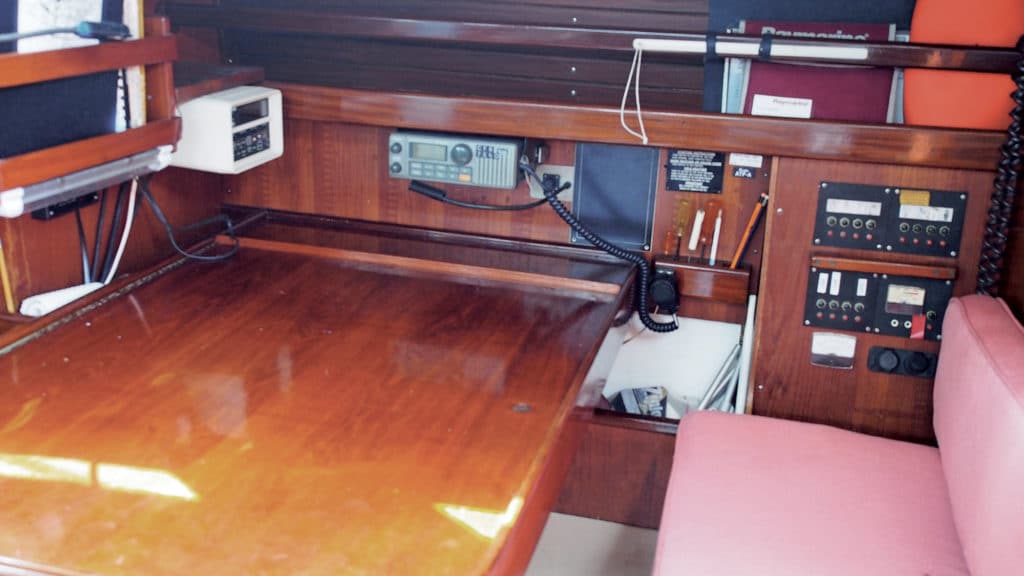
Charge It
Step one would be to analyze the existing source of electrical power. Currently the boat is equipped with a pair of Group 31 flooded-cell lead-acid batteries. They get recharged by a stock 65-amp alternator controlled by an ancient Balmar voltage regulator. This battery bank has an amp-hour capacity of about 200 amps, but unfortunately flooded lead-acid batteries like these suffer from cycle-life reduction if they get continually discharged below about 50 percent of their capacity. In effect, this boat currently has about 100 amp-hours of power available for running accessories.
In my dream redo, this would not be adequate, and I consider it marginal even as the boat is equipped now without a bit of engine run time to keep those batteries charged.
For me, one of the first upgrades would be to replace these batteries with a pair of group 31 absorbed glass-mat batteries. AGMs have considerably higher recharge-acceptance rates compared with flooded-cell batteries, and can be discharged up to 80 percent of capacity, meaning that engine run times will be at a more acceptable level when away from the dock, at least in terms of electrical-power generation. Upgrading the alternator and voltage regulator to a 100-amp Balmar set would also be on my list for this boat to minimize engine run time.
My intention is to add quite a bit more electrical equipment to this boat, and I prefer not to run things such as alternators near their maximum capacity for extended periods of time. Limiting the amount of full output extends their potential service life considerably.
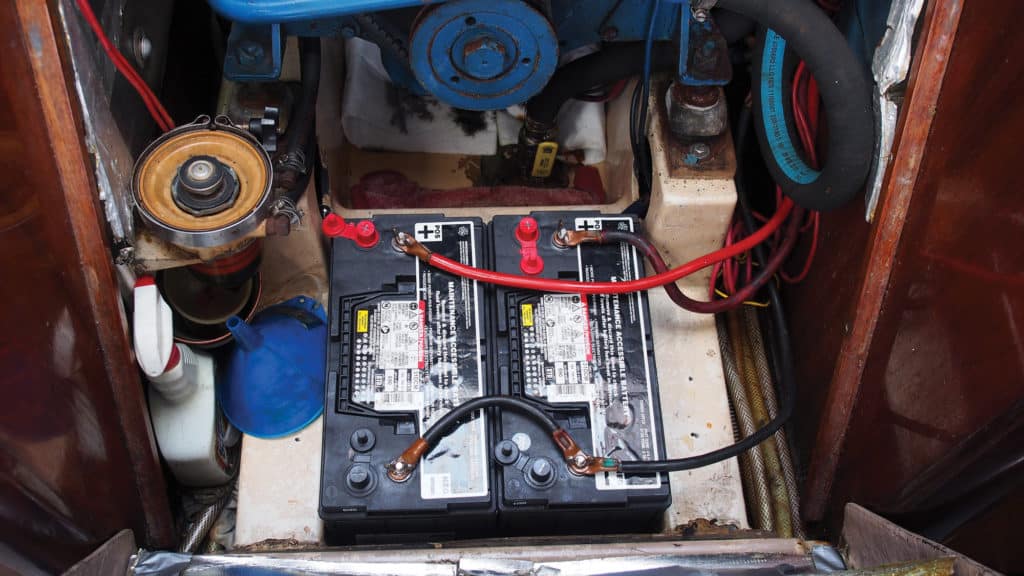
Plug and Play
AC power on board today is almost a must for boats that are going to be berthed at a dock. Yes, global warming is real, and sleeping on board without air conditioning at this point in my life just isn’t happening.
I’ve lost my enthusiasm for cold showers as well. In the old days, we used sun showers hanging from the boom in the cockpit and got by just fine, but that was then and this is now. The luxury of hot water on demand is not too much to ask in this day and age. So besides adding air conditioning to this boat, we are going to need to add a water heater and appropriate plumbing to deliver hot water to the galley and two heads.
The current refrigeration system, an Isotherm ASU unit, is only a 12-volt, and I would think about swapping that out for a 12-volt DC/120-volt AC unit. Or, as a money saving measure, I might just leave the 12-volt unit in place because I’m going to be installing a proper battery charger to keep my new AGM batteries charged up anyhow. We’ll let the charger replenish the power used by the Isotherm unit.
The bottom line here is that the boat is going to get shore power installed for the first time. The question becomes whether a 30-amp system or a 50-amp system will be needed. Determining that requires performing a load analysis. Here’s how I would go about doing it.
First we have to determine how many Btu we’re going to need to cool the boat. A visit to marinaire.com will connect you with a calculator that will provide the Btu per hour needed to air-condition the boat in either moderate or tropical environments. I chose moderate for this boat because based on MarineAire’s world map, only South Florida is in its tropical zone, and the plan for this boat is to stay in the mid-Atlantic to Northern states the majority of the time.
Based on the calculator results, I still came out needing one of the company’s largest units, which can produce 16,000 Btu of AC and 17,000 Btu of heat when needed. This unit draws just under 11 amps of AC power at 110 volts.
My new water heater will draw 13 amps, and I’ll need another 8 amps for my P-12 Blue Sea 40-amp battery charger.
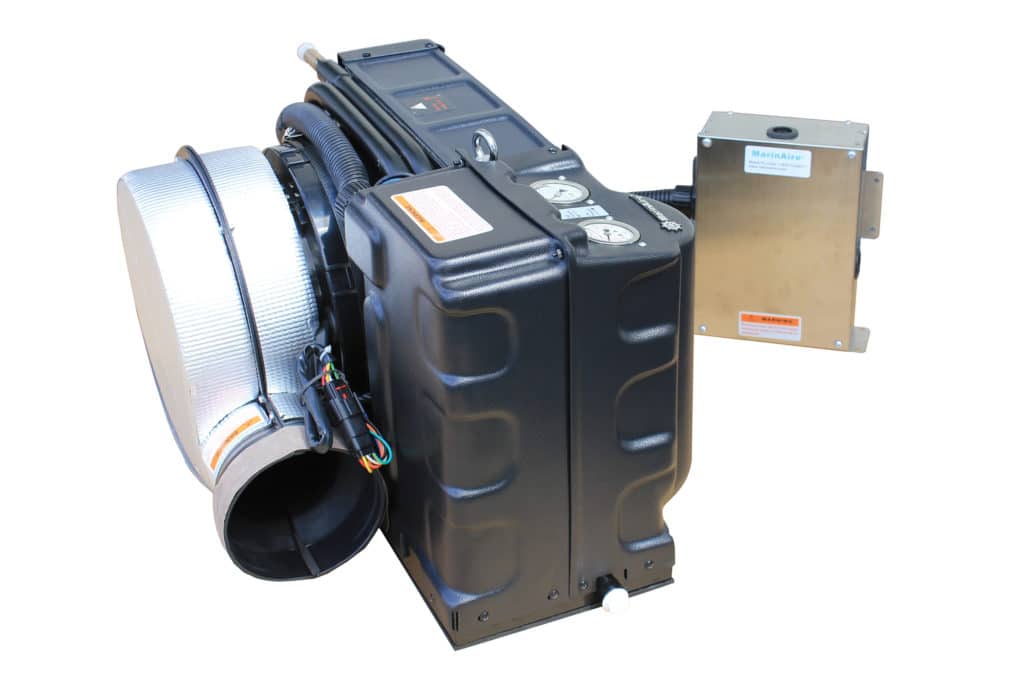
With an air conditioner, water heater and battery charger plugged in and running, we’re looking at just over 30 amps of AC power needed. That figure does not include any provision for a microwave oven, coffee maker, hair dryer or any other small AC appliance while at the dock.
Knowing this opens up two options for shore power: either a 50-amp service or possibly two 30-amp setups. The potential problem here is the marina itself; many don’t offer a 50-amp option at the dockside pedestal. There are myriad adapters available that would allow you to tap into multiple outlets to get to 50 amps, but remember: You don’t want to pull more than 30 amps from a 30-amp service.
One additional shore-power consideration on this boat is the 1,000-watt DC-to-AC inverter that has been installed. This was possibly done to facilitate running a laptop at some point, or maybe an electric shaver or small hair dryer. It is located in the aft head compartment, so I’m going with the shaver idea.
My inclination would be to relocate the inverter behind a panel in the navigation-station area, probably under the settee at the nav station, and resize it to a 2,000-watt unit. I would add a dedicated battery to supply DC power to the inverter and make sure the battery is connected to my Blue Sea charger. Since I am going to be running only intermittent loads from the inverter, a group 27 AGM will get the job done.
Note that I am not considering a generator for this major upgrade. Space is tight, and I don’t want to carry the extra weight. This is a performance cruiser, and I want it to stay that way. Besides, my plan is to stay mostly in slips when traveling, and so I’ll have access to shore power when I need it.
A Wednesday-night race series is in the plan as well, so I won’t be adding a bow thruster, anchor windlass or electric winches. For the occasional overnight away from the dock, I will still have the power I need to microwave some popcorn and run a laptop to check a weather forecast or watch a downloaded Netflix movie.
Side note: I have no plans to add solar panels or a wind generator either. I love the lines of this boat just the way Frers designed it.
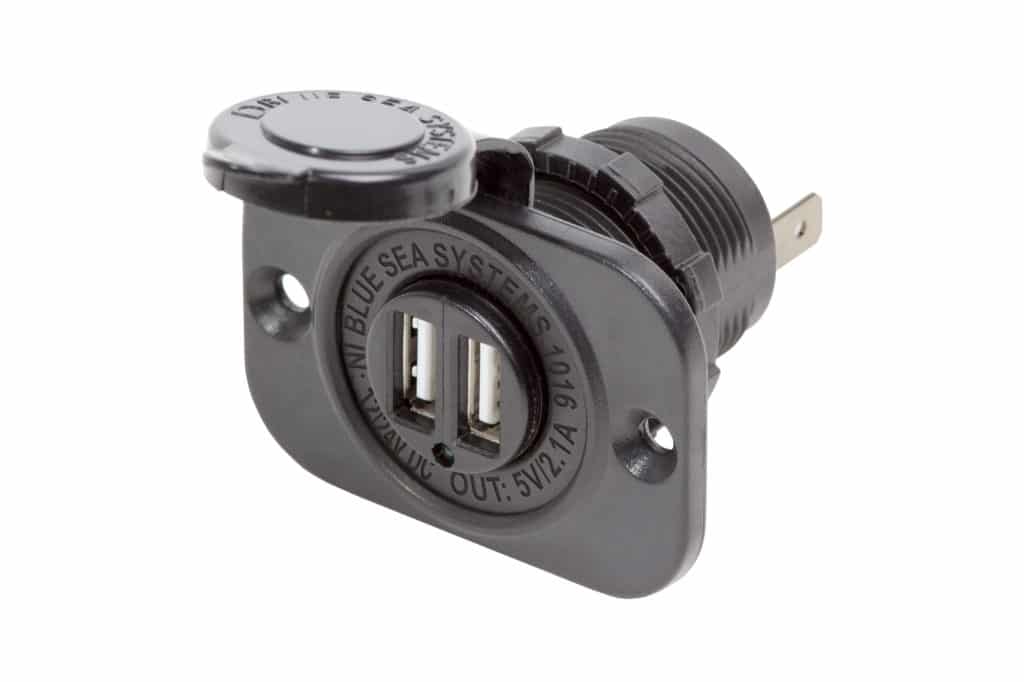
In Control
Based on the proposed changes to the electrical system, a new AC/DC combined panel is in order. The boat is currently equipped with 12 DC circuits and no AC circuits. We will also need to modify the battery-switching system, so that will allow the three new batteries, combined, to be separated.
For the panels, Blue Sea, Paneltronics and Bass Products are all possibilities. I just need to take some measurements to see what will fit where the existing panel is mounted. The design will also depend on whether I decide to go with a single 50-amp shore-power service or two 30-amp services.
In either case, rather than having two cigar-lighter-style outlets, we’ll swap those out for a pair of Blue Sea USB plug adapters, which are more relevant in today’s world.
Instruments and Toys
With the exception of the autopilot, the original onboard electronics need to be replaced. A pair of multifunction displays are in order here, with one mounted at the traditional nav station down below and another in a pod at the helm. An updated VHF with digital selective calling and possibly integrated AIS will also be needed. And since trips north to Maine from Annapolis will be part of the plan, we’ll add radar. Air, wind and speed instruments will also be integrated via NMEA 2000. Since coastal cruising is going to be the primary use for this boat, satellite communications will not be part of the permanent upgrades.
I’m not a television person, so a boat with a flat-screen TV that rises up from behind a settee and interfaces with the chart plotter means nothing more to me than just one more thing that can break and need repair. I do have an iPad loaded with my favorite tunes though, so some speakers and a small AM/FM stereo set that connects to my iPhone or iPad via Bluetooth will augment the good company I plan to have on board for entertainment.
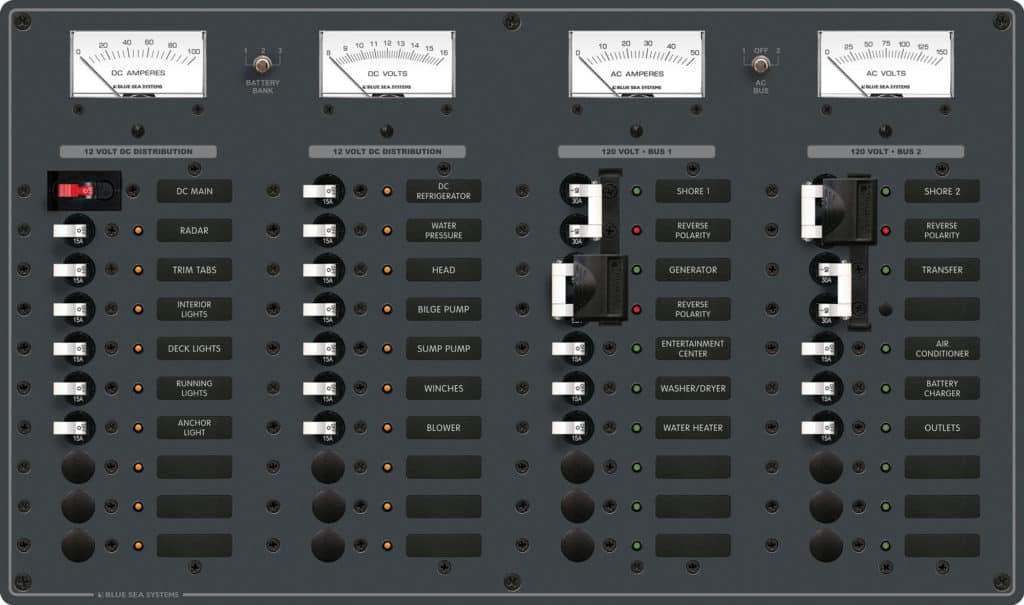
Dollars and Sense
The used-boat market has a huge inventory these days, and there a lot of really great boats available for any price range—and at considerable savings compared with the cost of a new boat.
This Beneteau First 42 that I have my eye on has an asking price of $59,900. Although there is no direct comparison for the 2020 model year from Beneteau, a similar boat in this size range would cost over $200,000. That’s at least a $140,000 differential.
That can buy a lot of upgrades!
The proposals I suggest here will not be inexpensive, but when compared with the cost of a new boat with similar equipment (much of it optional), you can come out tens of thousands of dollars ahead with careful selection of the right used boat. I think the biggest part of any decision here is to be totally honest with yourself about your genuine needs versus your dreams and desires.
Ed Sherman writes frequently on a range of technical topics for CW. He is a longtime Boat of the Year judge, and recently retired as vice president of the American Boat & Yacht Council.








